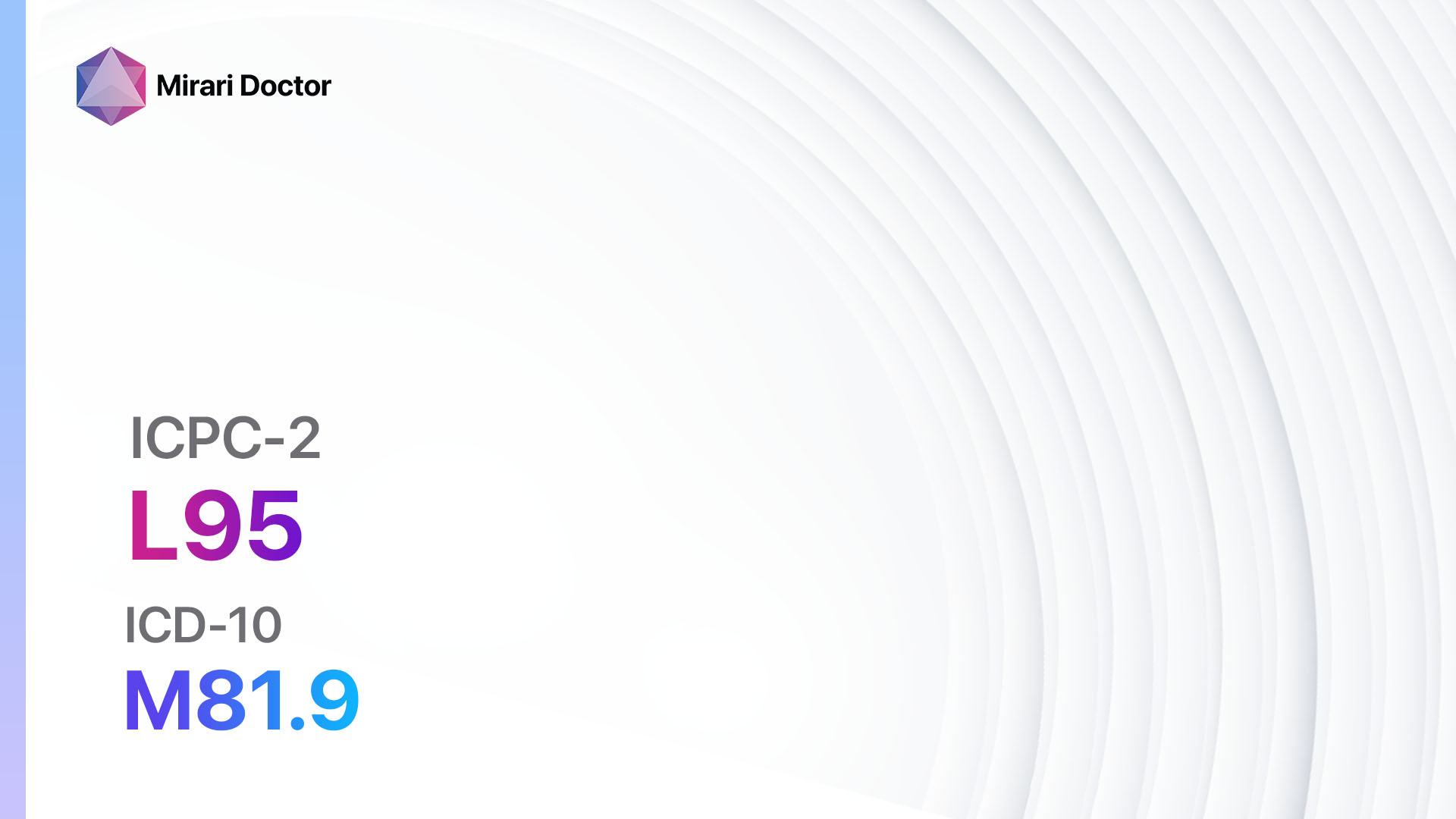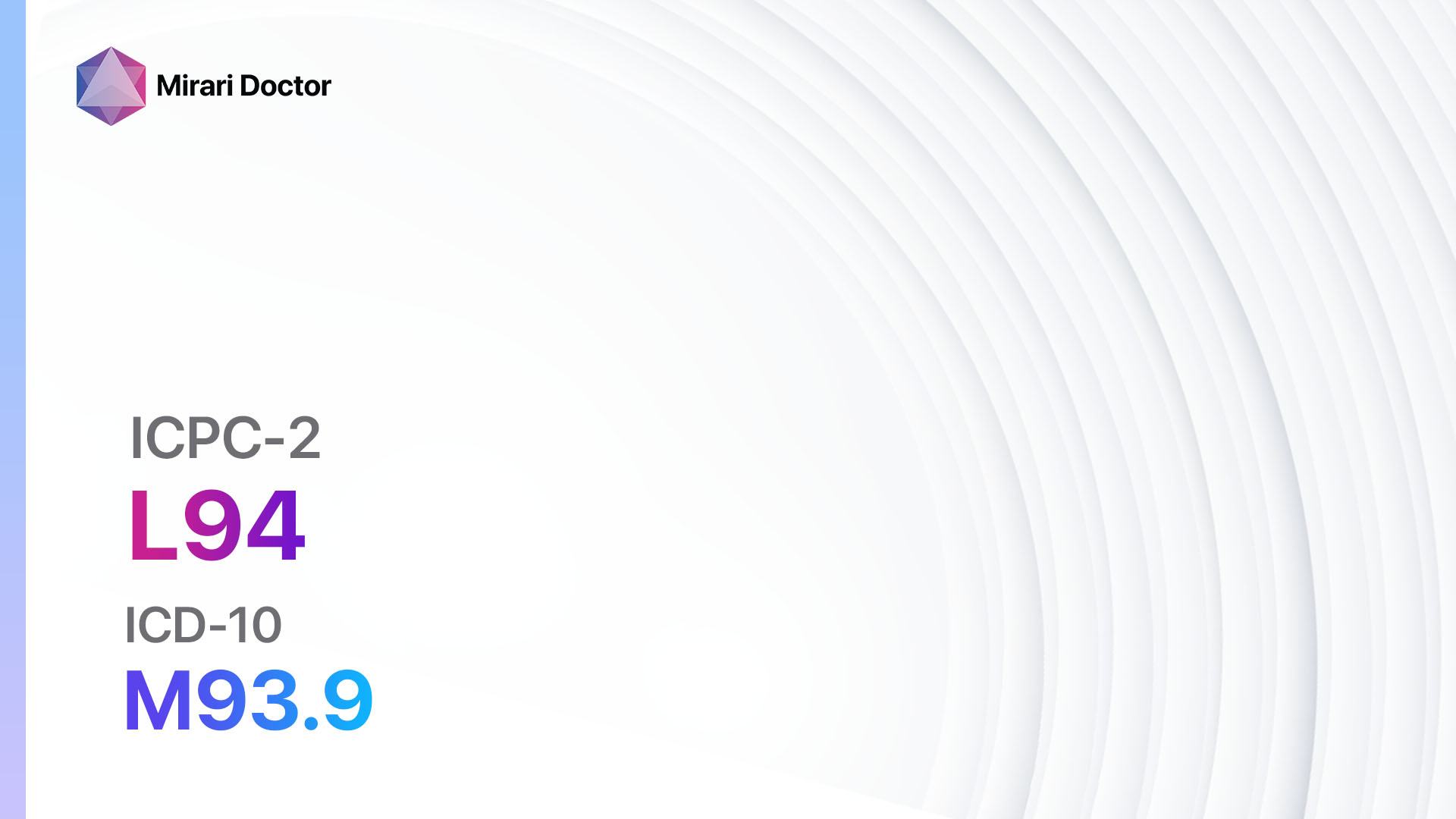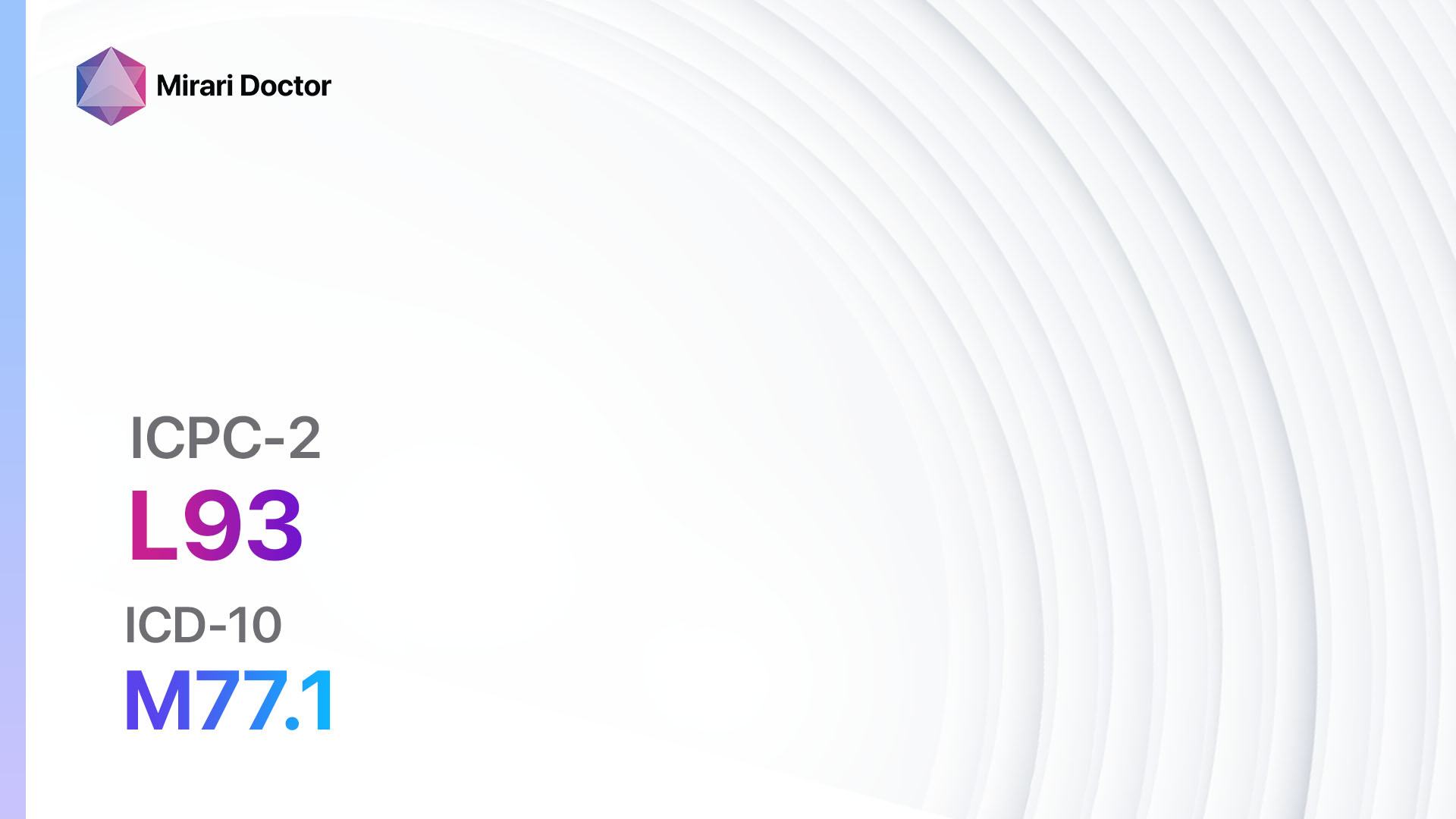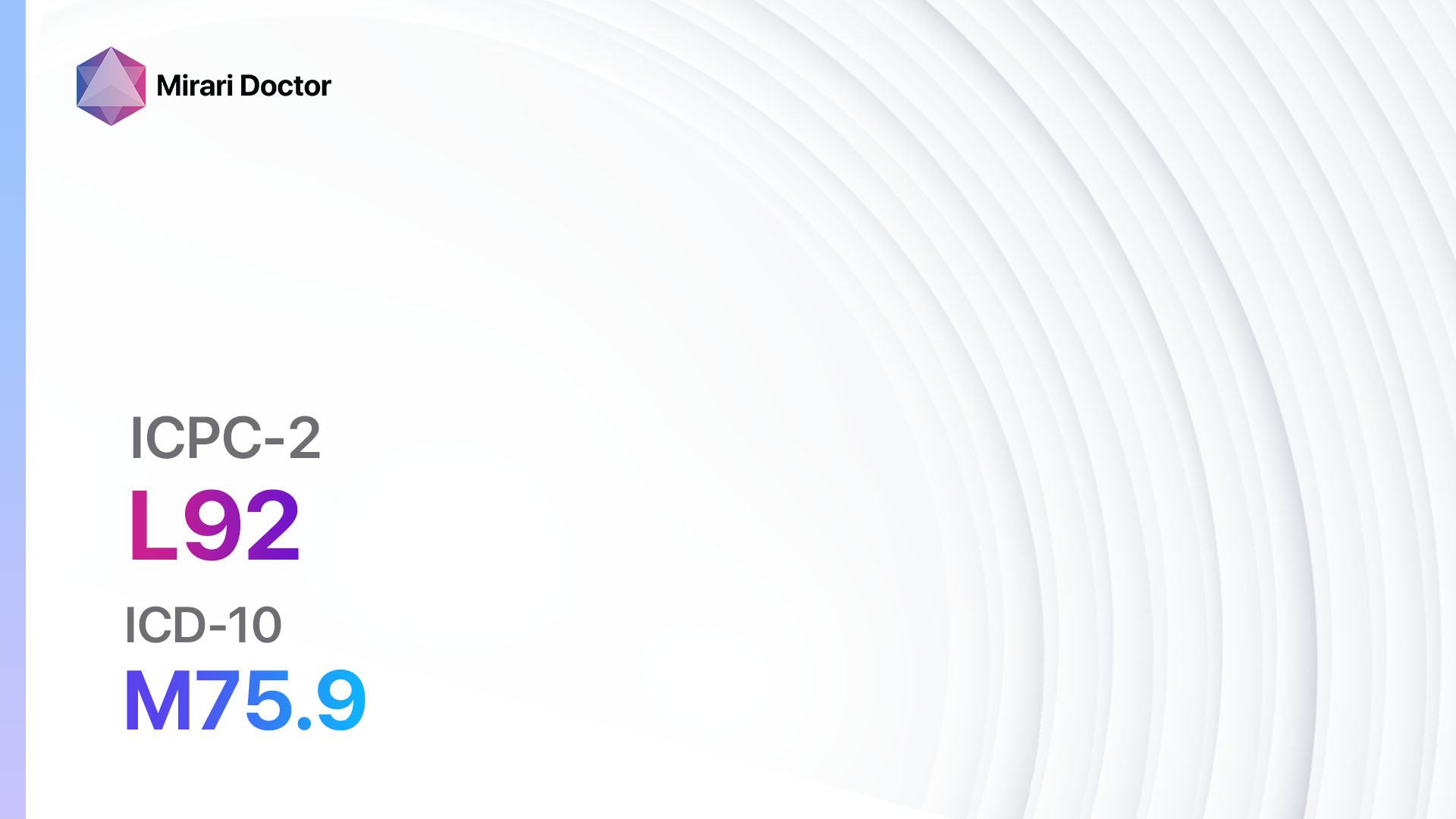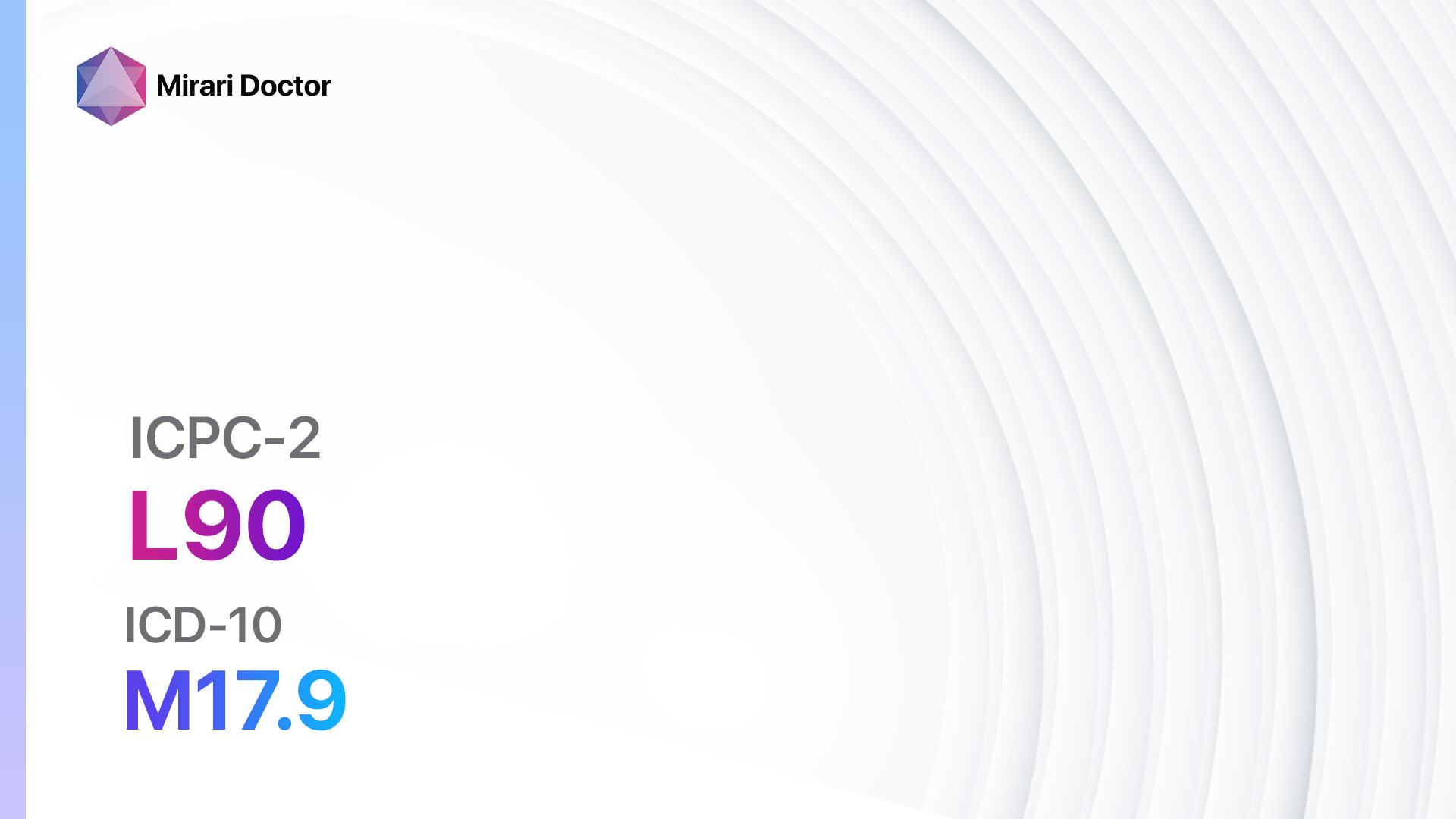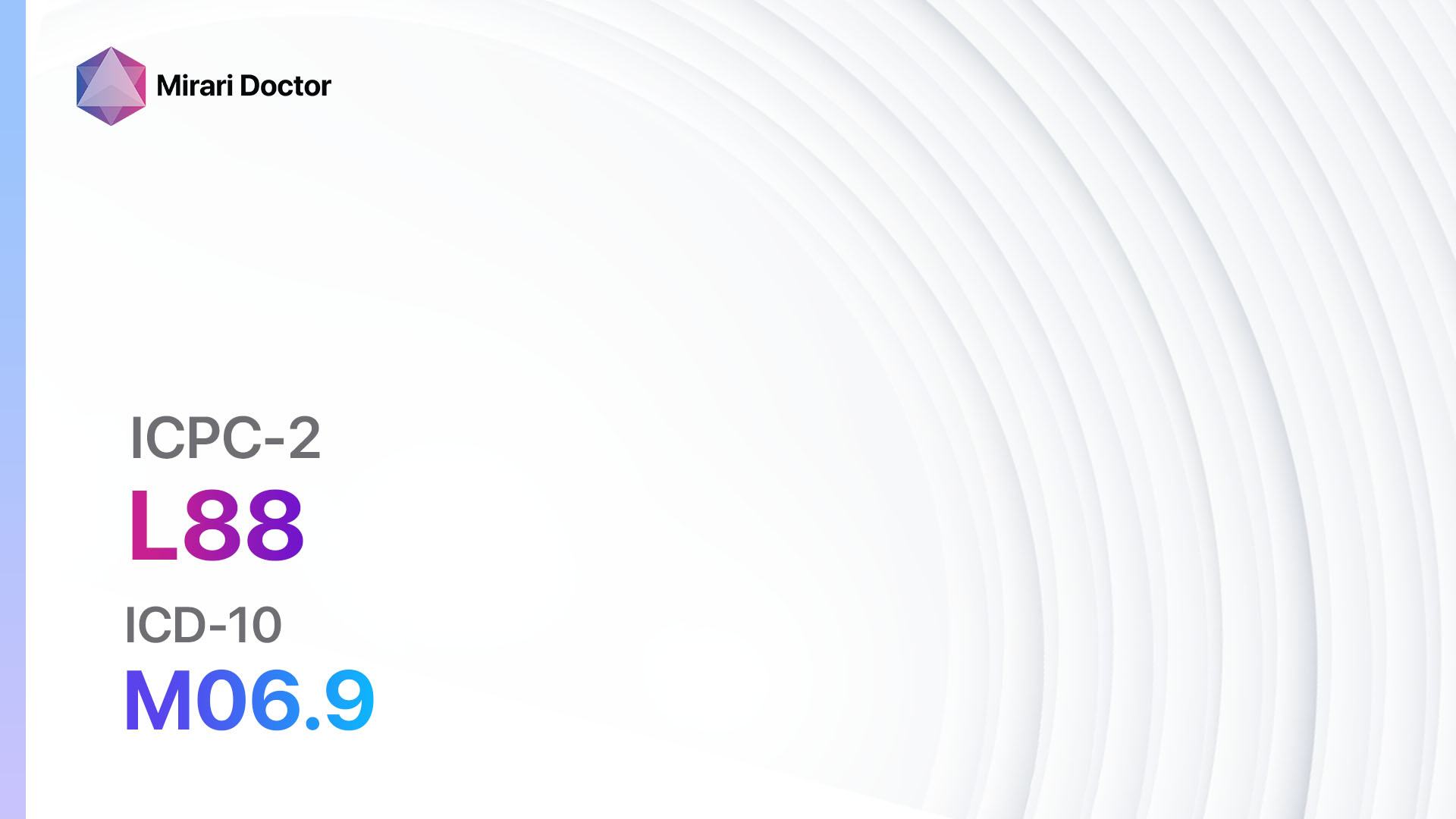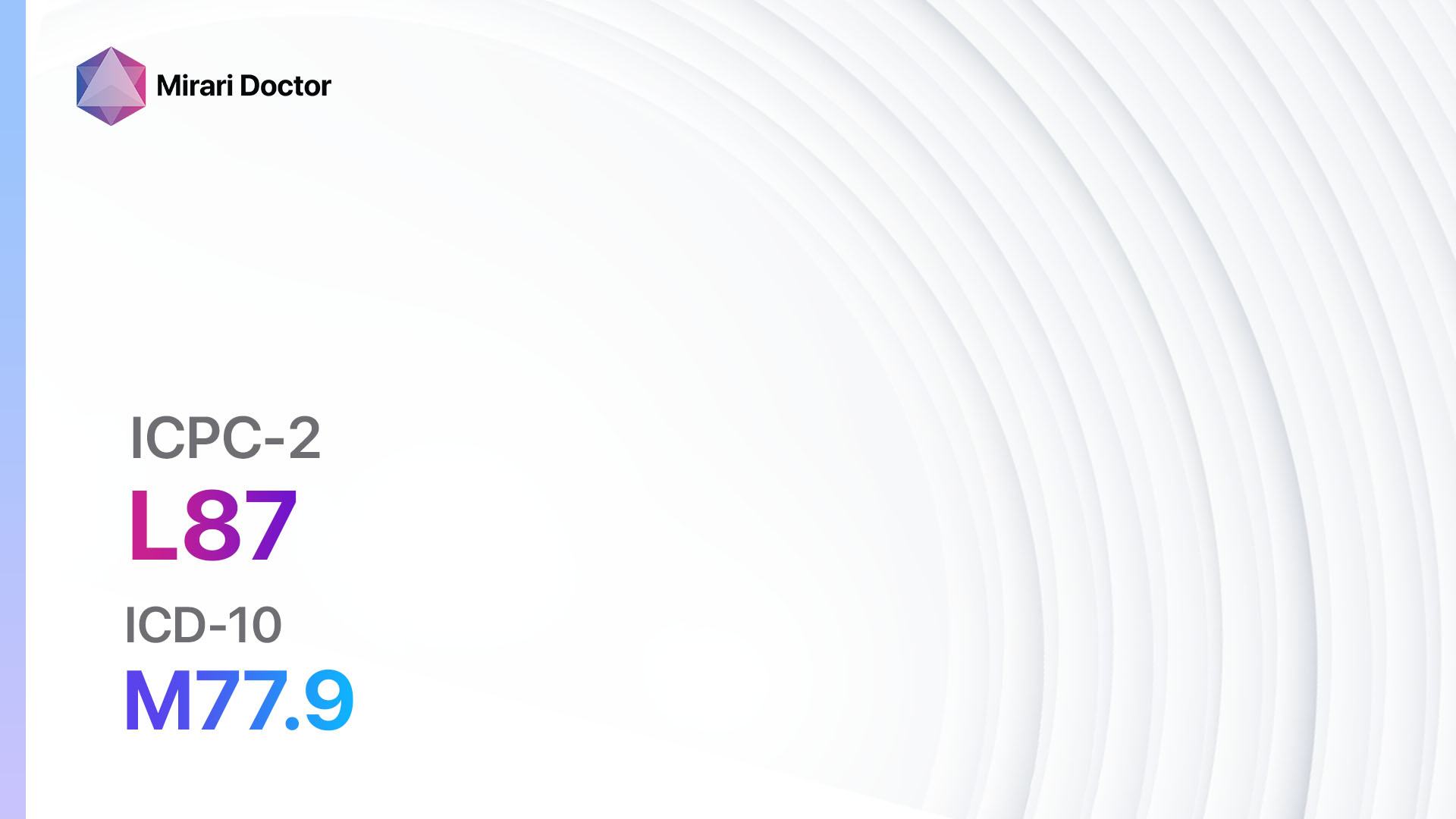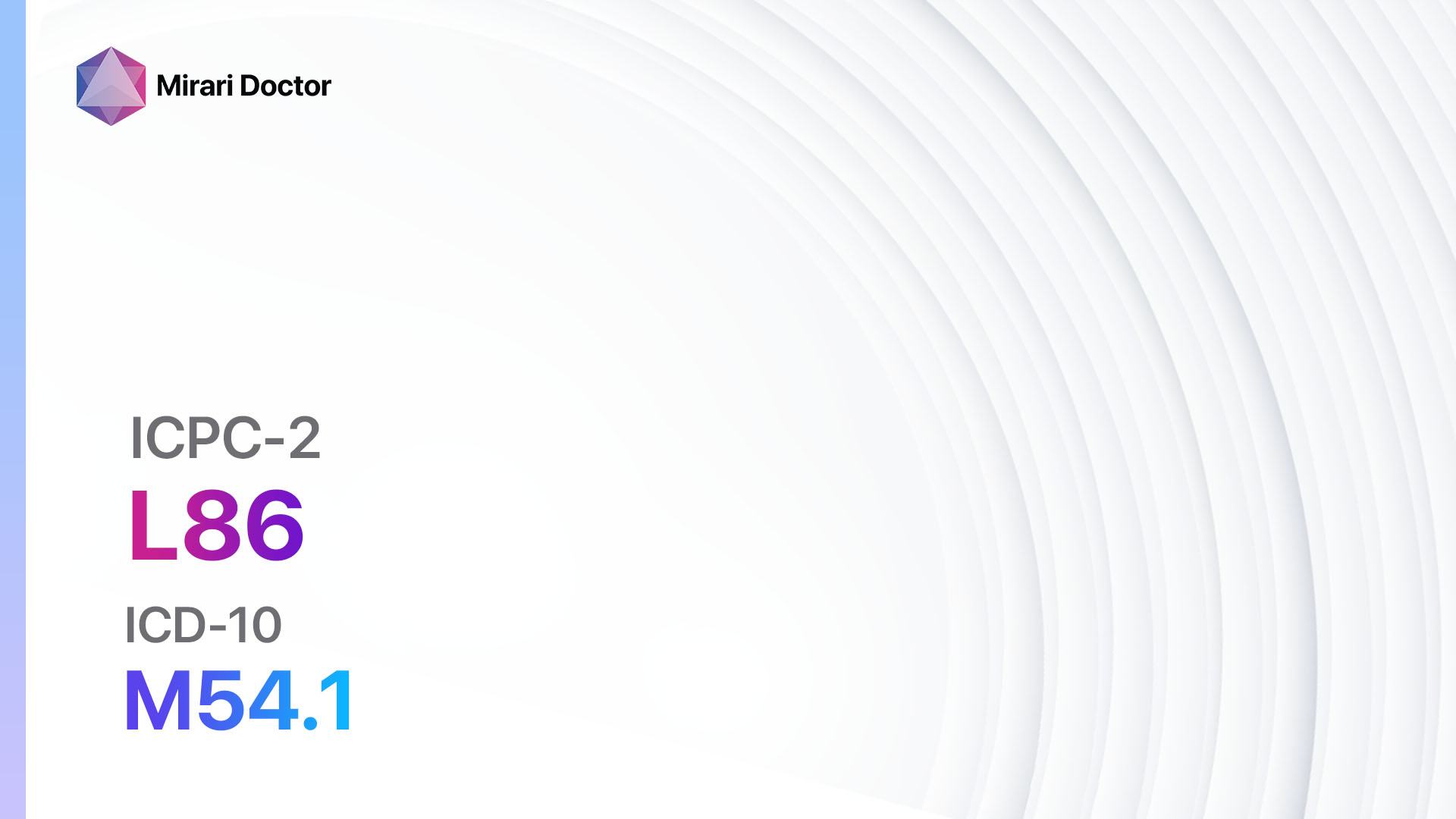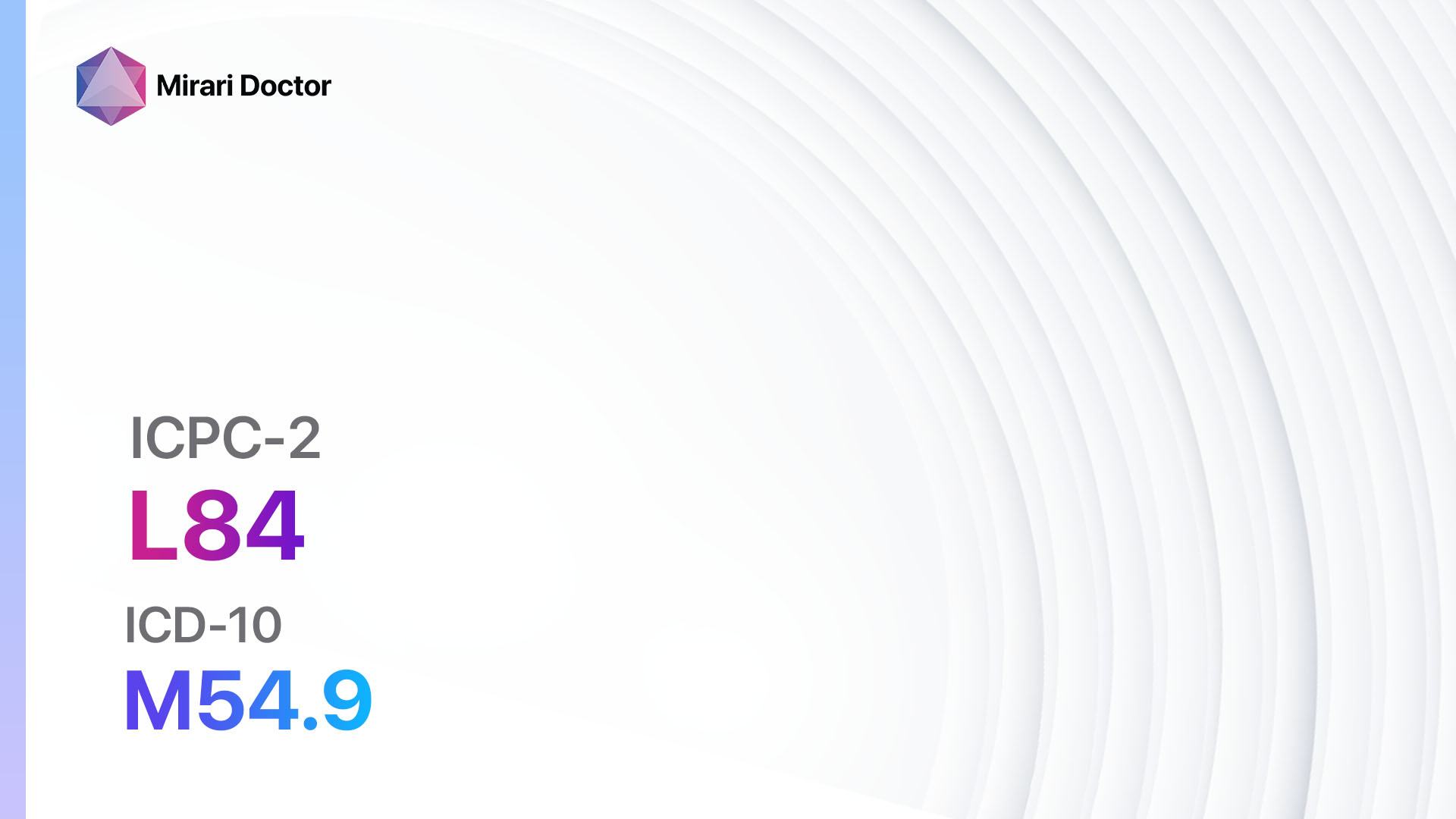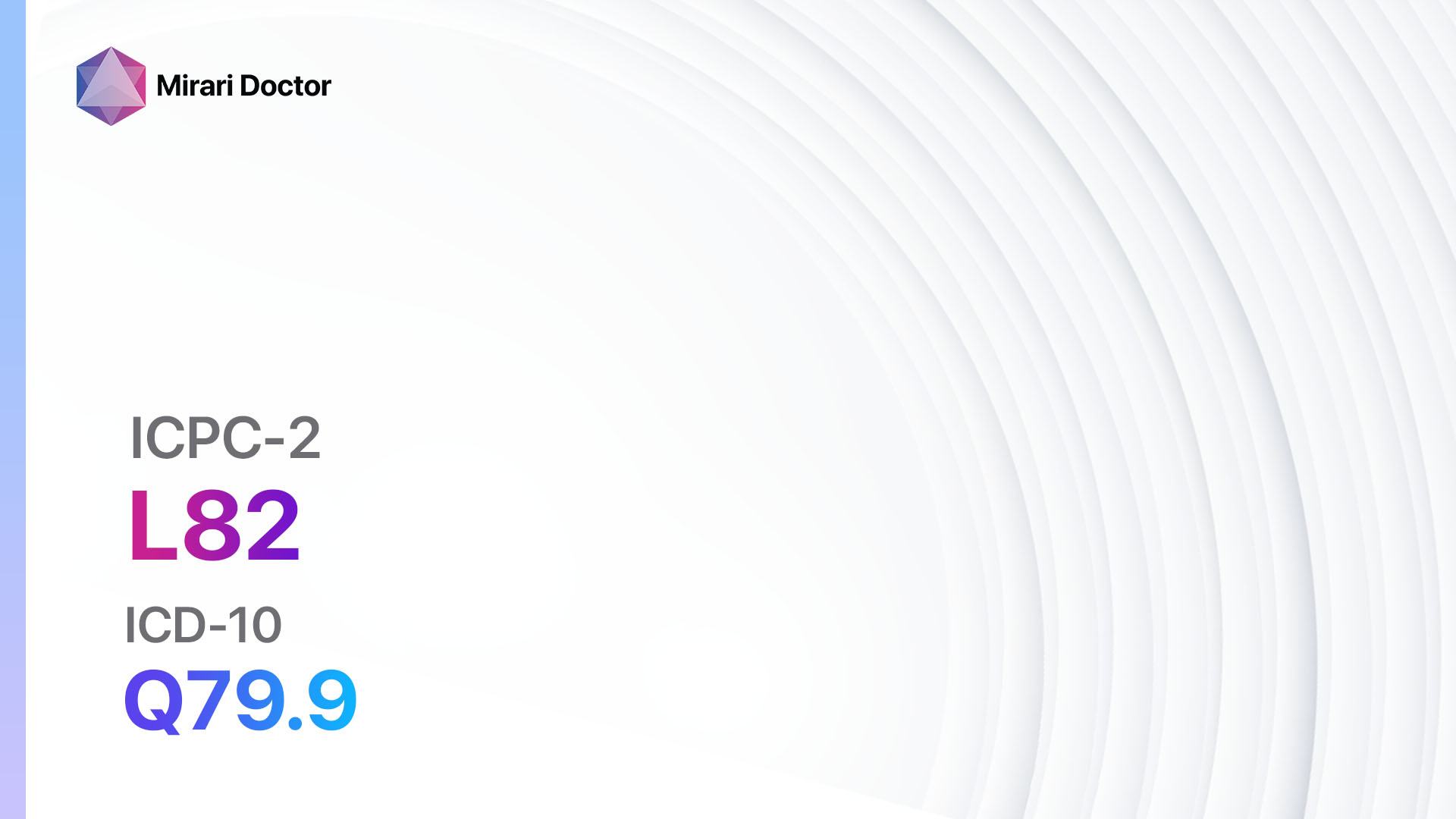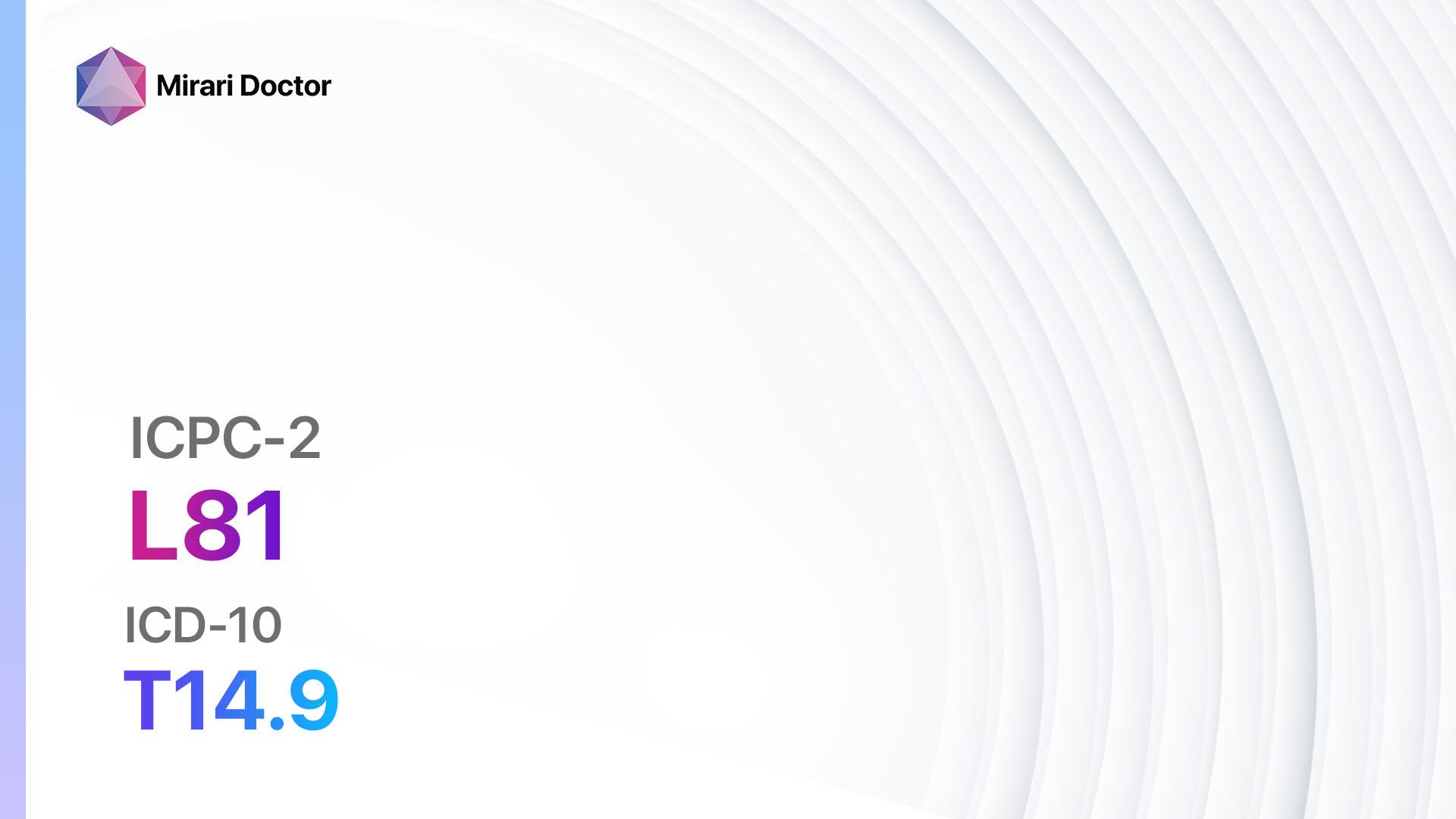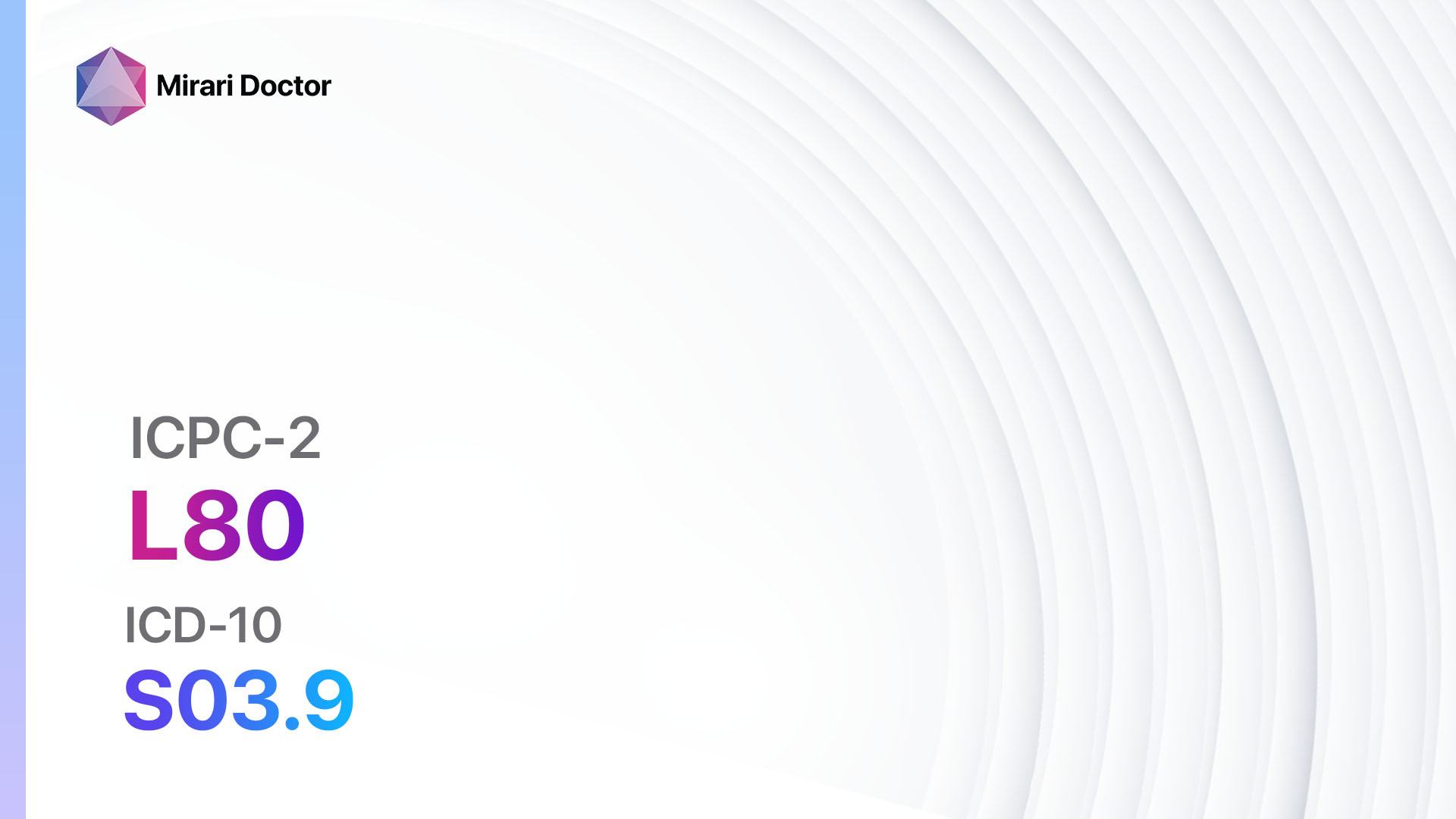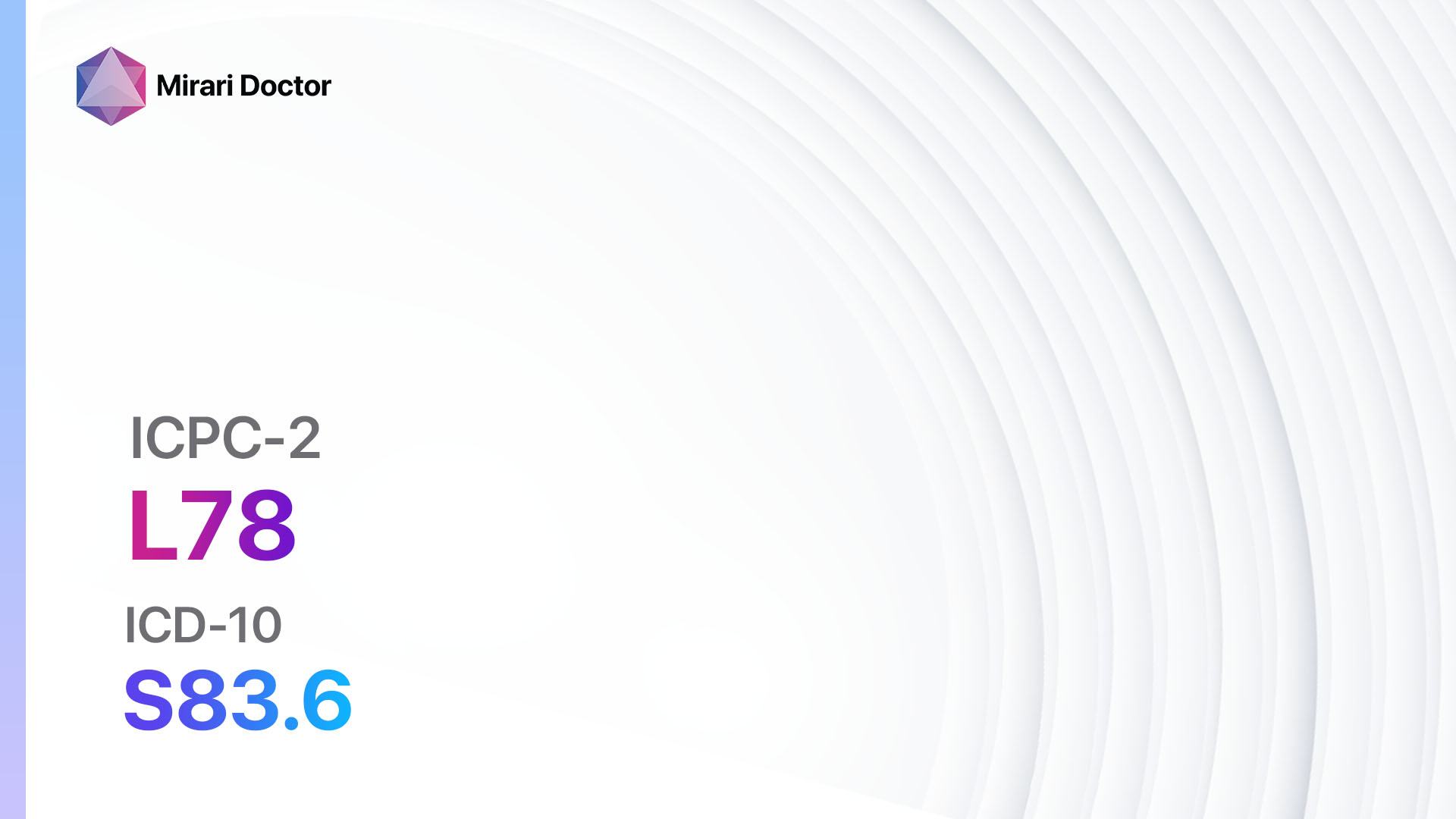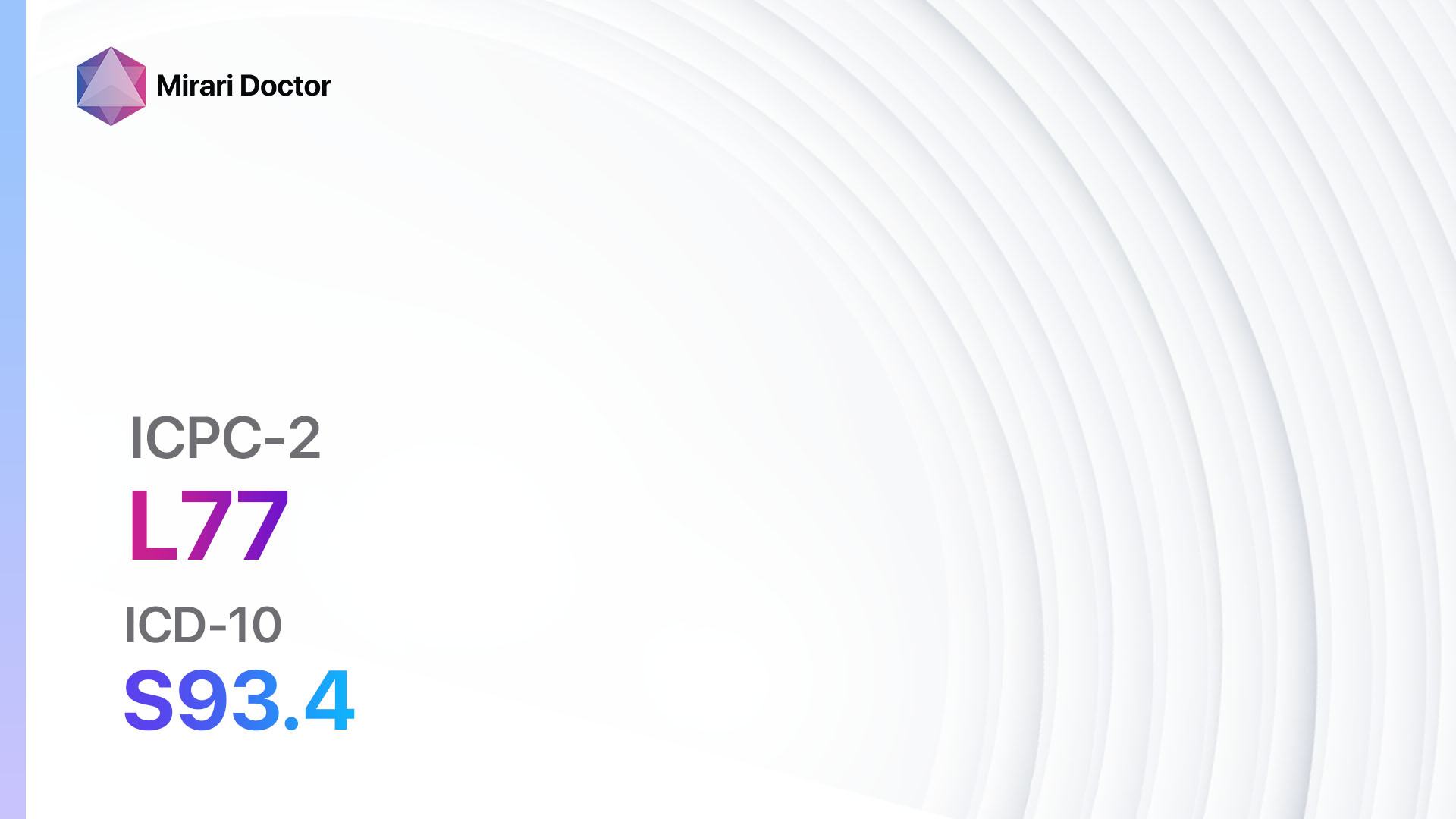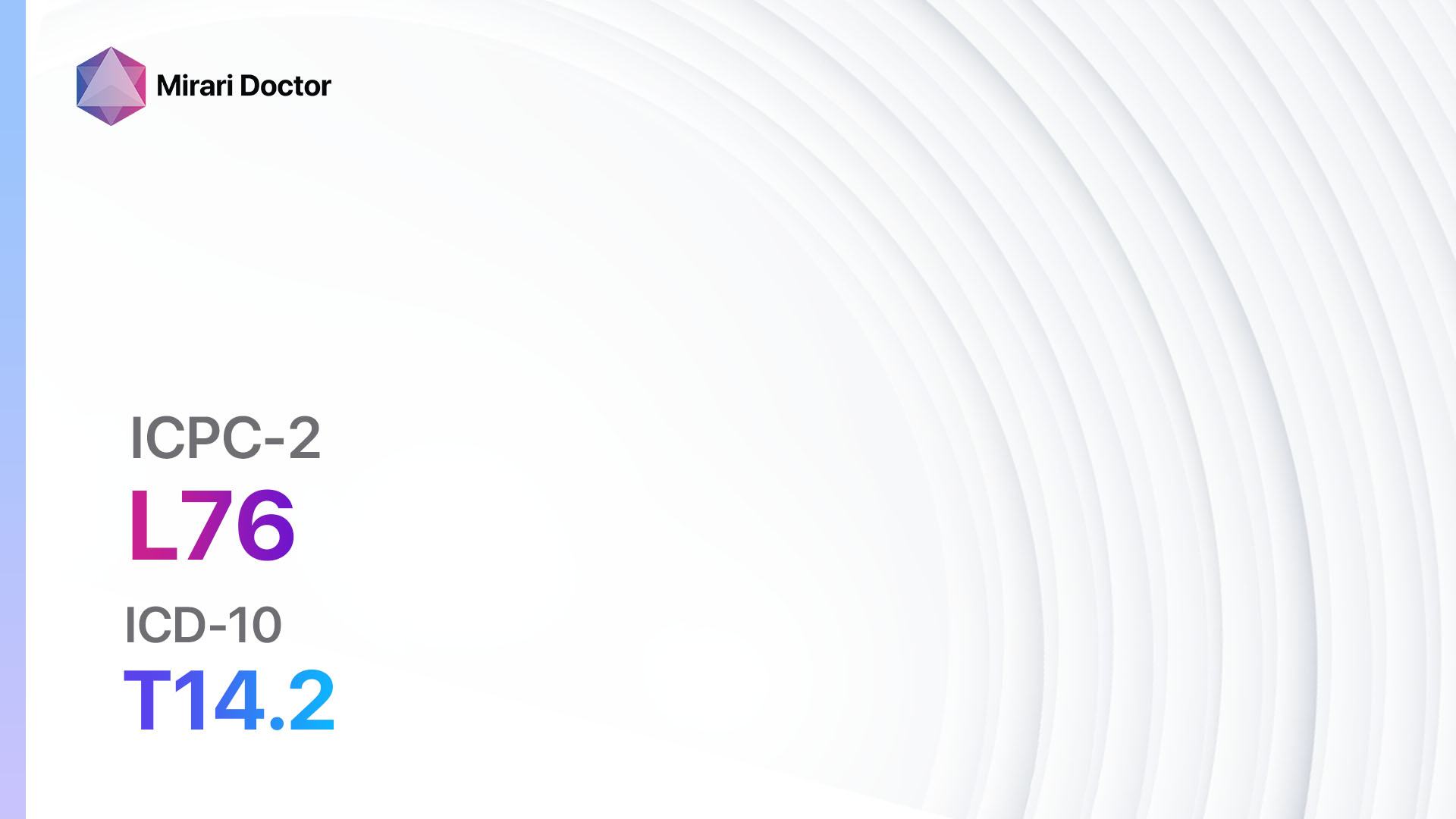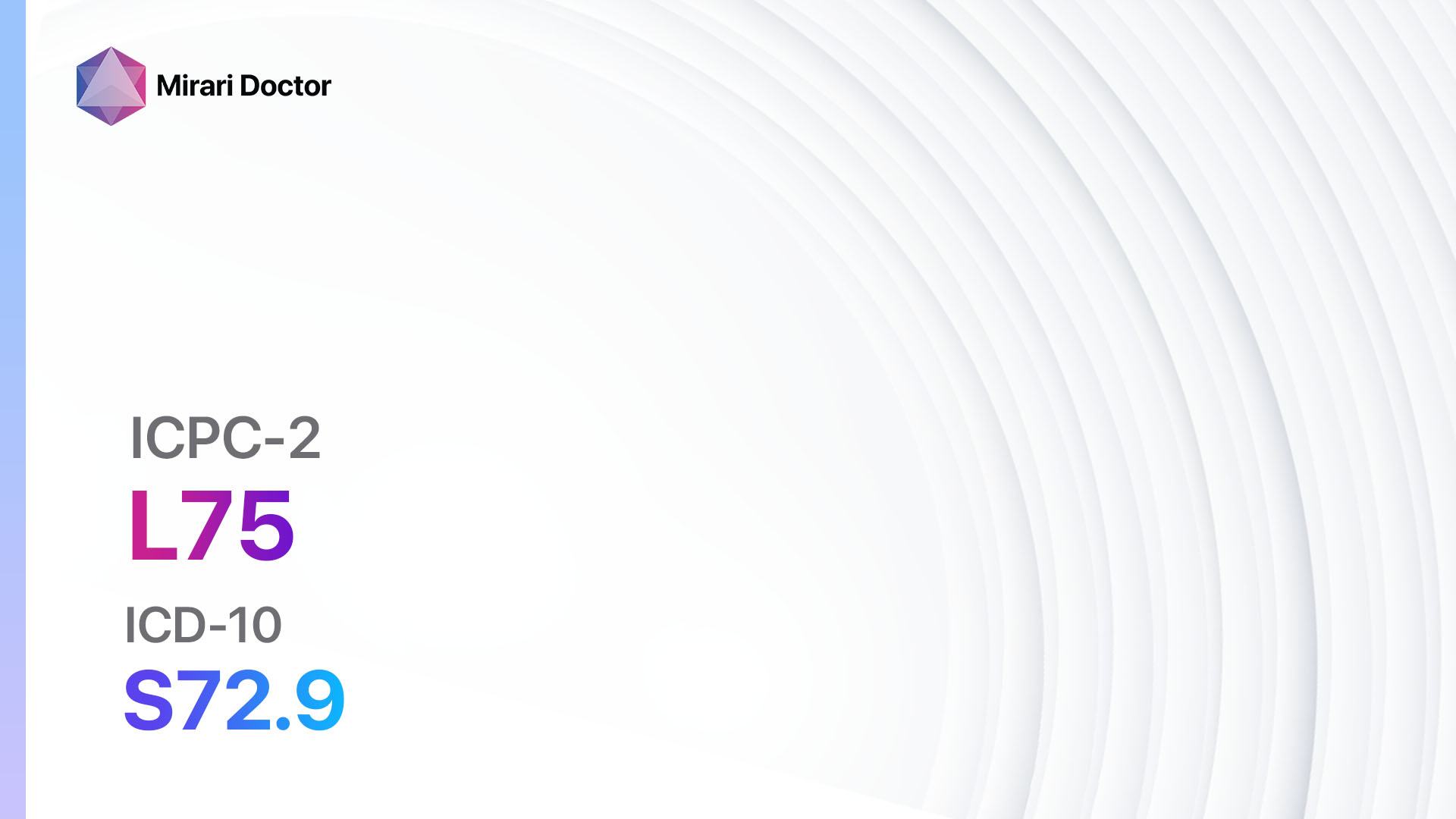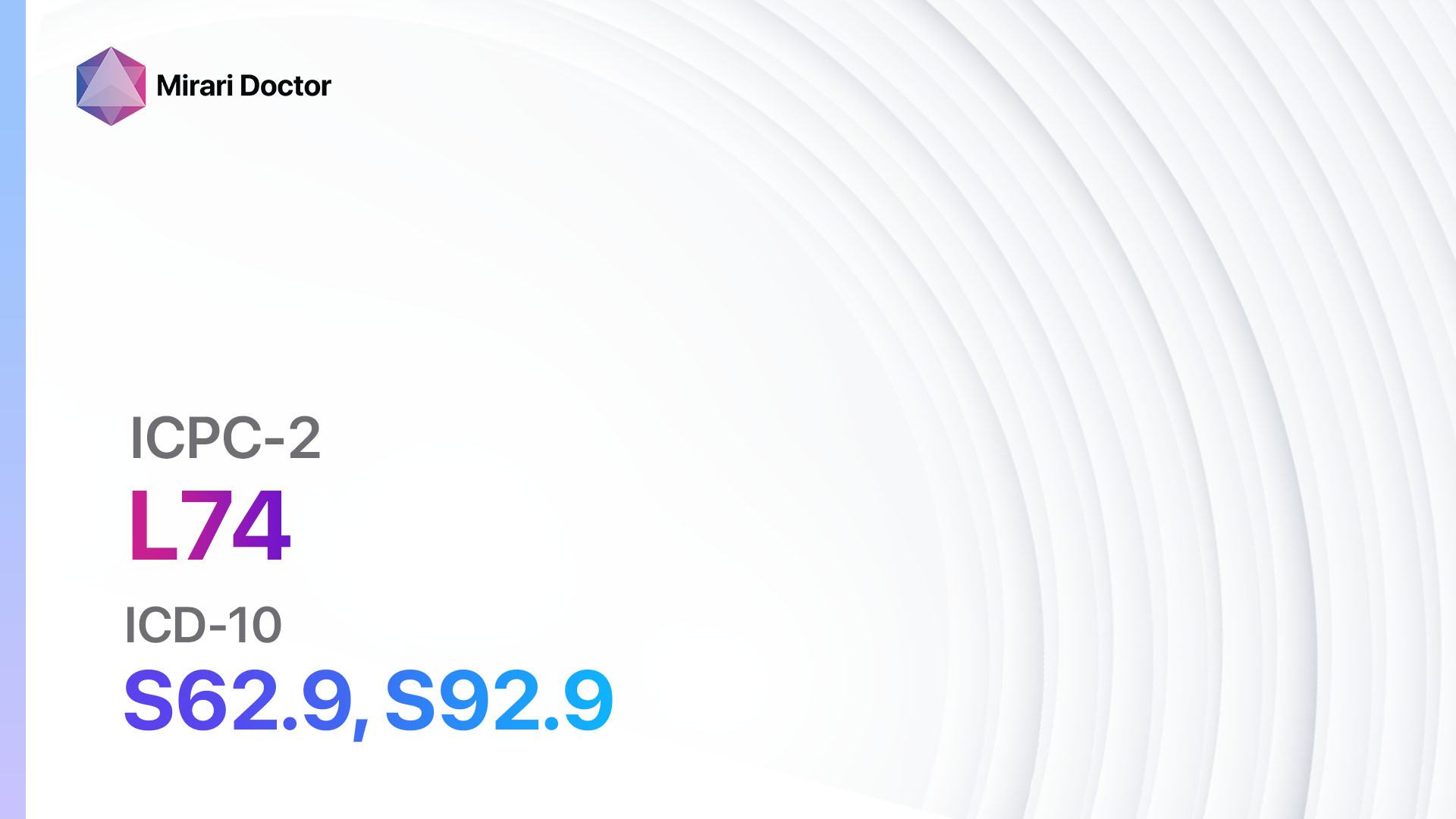
Introduction
Fractures of the hand or foot bones are common injuries that can occur due to trauma, falls, or repetitive stress.[1][2] These fractures can cause significant pain, swelling, and limited mobility, affecting daily activities.[3] The aim of this guide is to provide a comprehensive overview of the diagnosis and management of fractures of the hand or foot bones.
Codes
- ICPC-2 Code: L74 Fracture: hand/foot bone[4]
- ICD-10 Code: S62.9 Fracture at wrist and hand level, unspecified, S92.9 Fracture of foot, except ankle, unspecified[5]
Symptoms
- Pain: Patients may experience localized pain at the site of the fracture.[6]
- Swelling: Swelling and bruising may be present around the affected area.[7]
- Deformity: Fractures can cause visible deformity or misalignment of the affected bone.[8]
- Limited mobility: Fractures can restrict movement and make it difficult to perform normal activities.[9]
- Tenderness: The affected area may be tender to touch.[10]
- Difficulty bearing weight: Fractures in the foot bones can make it challenging to bear weight on the affected foot.
Causes
- Trauma: Fractures of the hand or foot bones can occur due to direct trauma, such as a fall or impact.
- Repetitive stress: Certain activities or occupations that involve repetitive stress on the hand or foot can increase the risk of fractures.
- Osteoporosis: Weakened bones due to osteoporosis can make fractures more likely, even with minimal trauma.
Diagnostic Steps
Medical History
- Gather information about the patient’s medical history, including any previous fractures, osteoporosis, or other bone-related conditions.
- Ask about the mechanism of injury and any associated symptoms, such as pain, swelling, or difficulty moving the affected hand or foot.
- Inquire about any relevant risk factors, such as repetitive stress or a history of falls.
Physical Examination
- Perform a thorough physical examination of the affected hand or foot, looking for signs of deformity, swelling, tenderness, or bruising.
- Assess the range of motion and strength of the hand or foot, comparing it to the unaffected side.
- Palpate the affected area to identify any areas of tenderness or instability.
Laboratory Tests
- Blood tests: While blood tests are not typically necessary for diagnosing fractures, they may be ordered to rule out other underlying conditions or assess overall health.
Diagnostic Imaging
- X-rays: X-rays are the primary imaging modality used to diagnose fractures. They can provide detailed images of the bones, allowing for accurate assessment of the fracture type, location, and alignment.
- CT scans: In complex fractures or cases where more detailed imaging is required, a CT scan may be ordered to provide a three-dimensional view of the fracture.
- MRI: In some cases, an MRI may be necessary to evaluate soft tissue structures, such as ligaments or tendons, in addition to assessing the fracture.
Other Tests
- Bone scan: In certain situations, a bone scan may be recommended to evaluate for any additional fractures or assess the overall bone health.
- Ultrasound: Ultrasound may be used to assess soft tissue structures, such as tendons or ligaments, in cases where there is suspicion of associated soft tissue injury.
Follow-up and Patient Education
- Provide appropriate follow-up care instructions, including information on pain management, immobilization, and activity modification.
- Educate the patient on the importance of compliance with treatment and follow-up appointments.
- Discuss the expected timeline for recovery and any potential complications or warning signs that should prompt immediate medical attention.
Possible Interventions
Traditional Interventions
Medications:
Top 5 drugs for Fracture: hand/foot bone:
- Nonsteroidal anti-inflammatory drugs (NSAIDs) (e.g., Ibuprofen, Naproxen):
- Cost: Generic versions can be $3-$20/month.
- Contraindications: Active peptic ulcer disease, history of gastrointestinal bleeding, severe renal impairment.
- Side effects: Upset stomach, heartburn, increased risk of bleeding.
- Severe side effects: Gastrointestinal bleeding, kidney damage.
- Drug interactions: Anticoagulants, corticosteroids.
- Warning: Prolonged use can increase the risk of cardiovascular events.
- Acetaminophen:
- Cost: Generic versions can be $3-$10/month.
- Contraindications: Severe liver disease, alcoholism.
- Side effects: Rare at therapeutic doses.
- Severe side effects: Liver toxicity (with overdose).
- Drug interactions: None significant.
- Warning: Avoid exceeding the recommended daily dose to prevent liver damage.
- Opioids (e.g., Oxycodone, Hydrocodone):
- Cost: Generic versions can be $10-$50/month.
- Contraindications: Respiratory depression, severe asthma.
- Side effects: Sedation, constipation, nausea.
- Severe side effects: Respiratory depression, addiction.
- Drug interactions: Benzodiazepines, alcohol.
- Warning: Use with caution due to the risk of addiction and respiratory depression.
- Muscle relaxants (e.g., Cyclobenzaprine, Methocarbamol):
- Cost: Generic versions can be $10-$30/month.
- Contraindications: Severe liver disease, history of drug abuse.
- Side effects: Drowsiness, dry mouth, dizziness.
- Severe side effects: Serotonin syndrome (rare).
- Drug interactions: Sedatives, antidepressants.
- Warning: Avoid alcohol and activities requiring mental alertness while taking muscle relaxants.
- Calcium and Vitamin D supplements:
- Cost: Varies depending on the brand and formulation.
- Contraindications: Hypercalcemia, vitamin D toxicity.
- Side effects: Constipation, bloating.
- Severe side effects: Hypercalcemia (with excessive intake).
- Drug interactions: Thiazide diuretics, corticosteroids.
- Warning: Regular monitoring of calcium levels is recommended.
Alternative Drugs:
- Topical analgesics (e.g., Lidocaine patches): Provide localized pain relief without systemic side effects. Cost: $10-$50 per patch.
- Gabapentin: May be used for neuropathic pain associated with fractures. Cost: Generic versions can be $10-$30/month.
- Tramadol: An opioid-like analgesic that can be used as an alternative to traditional opioids. Cost: Generic versions can be $10-$50/month.
- Bisphosphonates (e.g., Alendronate, Risedronate): Used for the treatment of osteoporosis to prevent future fractures. Cost: Generic versions can be $10-$50/month.
- Calcitonin: Another medication used for the treatment of osteoporosis. Cost: Varies depending on the formulation.
Surgical Procedures:
- Closed reduction and casting: In cases where the fracture can be realigned without surgery, a cast or splint may be applied to immobilize the affected bone and promote healing. Cost: $500-$2,000.
- Open reduction and internal fixation (ORIF): For more complex fractures or cases where the bones cannot be adequately aligned with closed reduction, surgery may be required to realign the bones and fix them with screws, plates, or rods. Cost: $5,000-$20,000.
Alternative Interventions
- Physical therapy: Physical therapy can help improve range of motion, strength, and function of the hand or foot following a fracture. Cost: $50-$150 per session.
- Acupuncture: May help reduce pain and promote healing. Cost: $60-$120 per session.
- Low-level laser therapy: Some studies suggest that low-level laser therapy may accelerate fracture healing. Cost: $50-$100 per session.
- Herbal supplements: Certain herbs, such as Arnica or Comfrey, may have potential benefits for reducing pain and inflammation. Cost: Varies depending on the specific supplement.
- Homeopathic remedies: Some homeopathic remedies, such as Symphytum or Ruta graveolens, are believed to promote bone healing. Cost: Varies depending on the specific remedy.
Lifestyle Interventions
- Rest and immobilization: Adequate rest and immobilization of the affected hand or foot is crucial for proper healing. Cost: None.
- Physical activity modification: Avoiding activities that may exacerbate pain or delay healing is important during the recovery period. Cost: None.
- Healthy diet: Consuming a balanced diet rich in calcium, vitamin D, and other essential nutrients can support bone health and healing. Cost: Varies depending on food choices.
- Smoking cessation: Smoking can delay fracture healing. Quitting smoking can improve healing outcomes. Cost: Varies depending on the chosen smoking cessation method.
- Weight-bearing exercises: Once the fracture has healed, weight-bearing exercises can help restore strength and function to the affected hand or foot. Cost: None.
It is important to note that the cost ranges provided are approximate and may vary depending on the location and availability of the interventions.
Mirari Cold Plasma Alternative Intervention
Understanding Mirari Cold Plasma
- Safe and Non-Invasive Treatment: Mirari Cold Plasma is a safe and non-invasive treatment option for various skin conditions. It does not require incisions, minimizing the risk of scarring, bleeding, or tissue damage.
- Efficient Extraction of Foreign Bodies: Mirari Cold Plasma facilitates the removal of foreign bodies from the skin by degrading and dissociating organic matter, allowing easier access and extraction.
- Pain Reduction and Comfort: Mirari Cold Plasma has a local analgesic effect, providing pain relief during the treatment, making it more comfortable for the patient.
- Reduced Risk of Infection: Mirari Cold Plasma has antimicrobial properties, effectively killing bacteria and reducing the risk of infection.
- Accelerated Healing and Minimal Scarring: Mirari Cold Plasma stimulates wound healing and tissue regeneration, reducing healing time and minimizing the formation of scars.
Mirari Cold Plasma Prescription
Video instructions for using Mirari Cold Plasma Device – L74 Fracture: hand/foot bone (ICD-10:S62.9, S92.9)
| Mild | Moderate | Severe |
| Mode setting: 2 (Wound Healing) Location: 0 (Localized) Morning: 15 minutes, Evening: 15 minutes |
Mode setting: 2 (Wound Healing) Location: 0 (Localized) Morning: 30 minutes, Lunch: 30 minutes, Evening: 30 minutes |
Mode setting: 2 (Wound Healing) Location: 0 (Localized) Morning: 30 minutes, Lunch: 30 minutes, Evening: 30 minutes |
| Mode setting: 9 (Arthritis) Location: 0 (Localized) Morning: 15 minutes, Evening: 15 minutes |
Mode setting: 9 (Arthritis) Location: 0 (Localized) Morning: 30 minutes, Lunch: 30 minutes, Evening: 30 minutes |
Mode setting: 9 (Arthritis) Location: 0 (Localized) Morning: 30 minutes, Lunch: 30 minutes, Evening: 30 minutes |
| Mode setting: 9 (Arthritis) Location: 0 (Localized) Morning: 15 minutes, Evening: 15 minutes |
Mode setting: 9 (Arthritis) Location: 0 (Localized) Morning: 30 minutes, Lunch: 30 minutes, Evening: 30 minutes |
Mode setting: 9 (Arthritis) Location: 0 (Localized) Morning: 30 minutes, Lunch: 30 minutes, Evening: 30 minutes |
| Total Morning: 45 minutes approx. $7.50 USD, Evening: 45 minutes approx. $7.50 USD |
Total Morning: 90 minutes approx. $15 USD, Lunch: 90 minutes approx. $15 USD, Evening: 90 minutes approx. $15 USD, |
Total Morning: 90 minutes approx. $15 USD, Lunch: 90 minutes approx. $15 USD, Evening: 90 minutes approx. $15 USD, |
| Usual treatment for 7-60 days approx. $105 USD – $900 USD | Usual treatment for 6-8 weeks approx. $1,890 USD – $2,520 USD |
Usual treatment for 3-6 months approx. $4,050 USD – $8,100 USD
|
 |
|
Use the Mirari Cold Plasma device to treat Fracture: hand/foot bone effectively.
WARNING: MIRARI COLD PLASMA IS DESIGNED FOR THE HUMAN BODY WITHOUT ANY ARTIFICIAL OR THIRD PARTY PRODUCTS. USE OF OTHER PRODUCTS IN COMBINATION WITH MIRARI COLD PLASMA MAY CAUSE UNPREDICTABLE EFFECTS, HARM OR INJURY. PLEASE CONSULT A MEDICAL PROFESSIONAL BEFORE COMBINING ANY OTHER PRODUCTS WITH USE OF MIRARI.
Step 1: Cleanse the Skin
- Start by cleaning the affected area of the skin with a gentle cleanser or mild soap and water. Gently pat the area dry with a clean towel.
Step 2: Prepare the Mirari Cold Plasma device
- Ensure that the Mirari Cold Plasma device is fully charged or has fresh batteries as per the manufacturer’s instructions. Make sure the device is clean and in good working condition.
- Switch on the Mirari device using the power button or by following the specific instructions provided with the device.
- Some Mirari devices may have adjustable settings for intensity or treatment duration. Follow the manufacturer’s instructions to select the appropriate settings based on your needs and the recommended guidelines.
Step 3: Apply the Device
- Place the Mirari device in direct contact with the affected area of the skin. Gently glide or hold the device over the skin surface, ensuring even coverage of the area experiencing.
- Slowly move the Mirari device in a circular motion or follow a specific pattern as indicated in the user manual. This helps ensure thorough treatment coverage.
Step 4: Monitor and Assess:
- Keep track of your progress and evaluate the effectiveness of the Mirari device in managing your Fracture: hand/foot bone. If you have any concerns or notice any adverse reactions, consult with your health care professional.
Note
This guide is for informational purposes only and should not replace the advice of a medical professional. Always consult with your healthcare provider or a qualified medical professional for personal advice, diagnosis, or treatment. Do not solely rely on the information presented here for decisions about your health. Use of this information is at your own risk. The authors of this guide, nor any associated entities or platforms, are not responsible for any potential adverse effects or outcomes based on the content.
Mirari Cold Plasma System Disclaimer
- Purpose: The Mirari Cold Plasma System is a Class 2 medical device designed for use by trained healthcare professionals. It is registered for use in Thailand and Vietnam. It is not intended for use outside of these locations.
- Informational Use: The content and information provided with the device are for educational and informational purposes only. They are not a substitute for professional medical advice or care.
- Variable Outcomes: While the device is approved for specific uses, individual outcomes can differ. We do not assert or guarantee specific medical outcomes.
- Consultation: Prior to utilizing the device or making decisions based on its content, it is essential to consult with a Certified Mirari Tele-Therapist and your medical healthcare provider regarding specific protocols.
- Liability: By using this device, users are acknowledging and accepting all potential risks. Neither the manufacturer nor the distributor will be held accountable for any adverse reactions, injuries, or damages stemming from its use.
- Geographical Availability: This device has received approval for designated purposes by the Thai and Vietnam FDA. As of now, outside of Thailand and Vietnam, the Mirari Cold Plasma System is not available for purchase or use.
References
- Reno Orthopaedic Clinic. (n.d.). Hand Fractures & Dislocations | Diagnosis & Treatments | ROC. Retrieved from https://www.renoortho.com/specialties/center-for-hand-upper-extremity/hand-trauma/
- Cleveland Clinic. (2021). Bone Fractures: Types, Symptoms & Treatment. Retrieved from https://my.clevelandclinic.org/health/diseases/15241-bone-fractures
- Healthline. (2018). Diagnosing and Treating a Broken Bone in Your Hand. Retrieved from https://www.healthline.com/health/broken-hand
- The University of Sydney. (2011). Appendix 4: Code groups from ICPC-2 and ICPC-2 PLUS. Retrieved from https://ses.library.usyd.edu.au/bitstream/handle/2123/9365/Appendix_4_YEAR_15.pdf%3Bjsessionid=3875CAC7F398E3F17C2B552103733BFC?sequence=5
- ICD10Data.com. (2024). Fracture at wrist and hand level S62 – ICD-10-CM Codes. Retrieved from https://www.icd10data.com/ICD10CM/Codes/S00-T88/S60-S69/S62-
- MedicineNet. (2021). Broken Bones: Fractures, Types, Symptoms, Treatment, Surgery. Retrieved from https://www.medicinenet.com/broken_bone_types_of_bone_fractures/article.htm
- MSD Manual Consumer Version. (n.d.). Overview of Fractures – MSD Manual Consumer Version. Retrieved from https://www.msdmanuals.com/home/injuries-and-poisoning/fractures/overview-of-fractures
- Campagne, D. (2024). Clinical analysis of 1301 children with hand and foot fractures and …. BMC Musculoskeletal Disorders. Retrieved from https://bmcmusculoskeletdisord.biomedcentral.com/articles/10.1186/s12891-024-07407-z
- Medical News Today. (2022). Fractures: Types, causes, symptoms, and treatment. Retrieved from https://www.medicalnewstoday.com/articles/173312
- AAPC. (n.d.). ICD-10-CM Code for Fracture at wrist and hand level S62 – AAPC. Retrieved from https://www.aapc.com/codes/icd-10-codes/S62
Related articles
Made in USA



